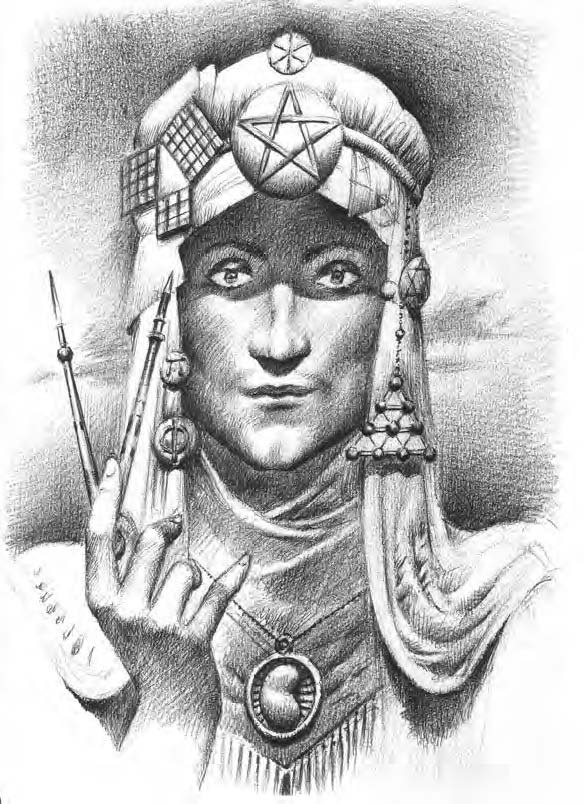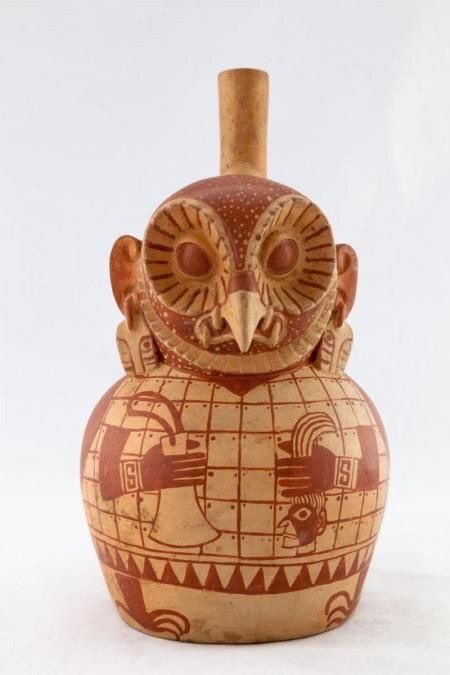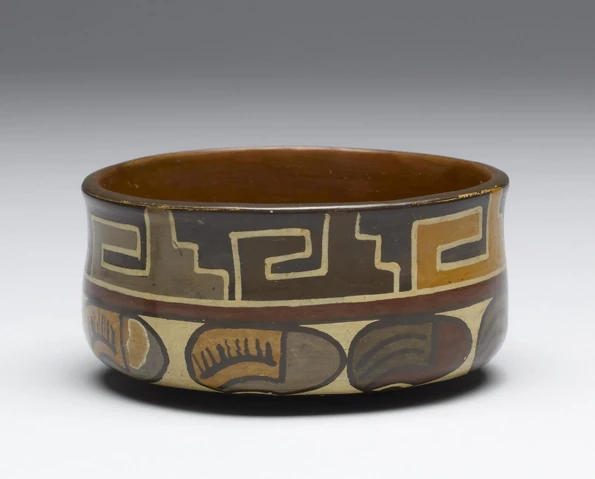
(c) Bruce Pennington 2010
https://philosophynow.org/issues/78/The_Death_of_Pythagoras
Notes: note the bean pendent!...my eyes popped open seeing the bean!!!...ral (running around laughing)...this image below I posted yesterday, which I thought I couldn't read, but on my Samsung tab I could expand, zooming in by touching the screen and spreading my fingers--not unlike a compass expands!...lol......this post like sixtyeighth in a series...see previous...the image from yesterday:
quote

Symmetry Analysis of Inca Textiles and Ceramics. Miles Daly. Georgia ...
unquote
I was able to open it on my tablet easily and quickly, and read it closely, and, wala, author found 'Pythagorean triplets' in the tocapu tunics just by counting and relating the squares...I had tried that, but being an illiterate mathematician/geometer, didn't note the Pythagorean import!...so, following on with my whimsy that Pythagoreans made it to the New World, from yesterday, I find it may not be so whimsical!...and casting about, I found a bio of Pythagoras, and after noting he was obsessed with beans...seeing how I'm kind of obsessed with the Moche Bean Warriors...there's a sympathetic bond!...lol...I found that article about Pythagoras' on and on with beans...apologize for snagging the art from the article...but the bean pendent is too cool!...
quote
As the members exited the conflagration, many were stabbed to death. Those who escaped both fire and knife fled to the surrounding countryside. Pythagoras was one of the lucky ones: his followers formed a human bridge to help him to clamber out of one of the blazing buildings. But his escape did not go undetected. Soon several of Kylon’s angry friends were in pursuit, yet as he had a significant lead, it looked as if the aging Pythagoras would make it to safety.Suddenly Pythagoras came to a stop. A vast bean field stretched before him. He stood frozen, uncertain what to do. His eyes focused on a single bean dangling inches from his papyrus- covered feet. So true was he to his ideals that, even at the risk of losing his own life, he was unwilling to trample upon even a single bean. Staring down upon that vibrant bean, the sun low in the sky, he imagined it to be blossoming into a divine ripeness before him. And as he stood there, hesitating, contemplating his next move, his pursuers caught up with him. They lifted their weapons, and bringing the knifes down hard, spilled Pythagoras’ blood on the plants – ending his life for the sake of a bean, and for the deep wisdom immersed in that diminutive cosmic object.
© Bruce Pennington 2010
© Bruce Pennington 2010
same site as drawing
unquote
hmmph...been waiting for the pdf file about the Triplets to open...should be able to copy/paste...reading it, I thought, I've read this before, even quoted it in my goings ons about tocapus...but what looks to be, is author used same web pages and such I have...like tocapus.org is in the references provided...it's a 'paper', the kind academics write up, sometimes for their degree pursuits...I dunno if the author has done any other follow on research...article dates to 2013...tried to find out, but no luck...well, heck, my computer is too slow and out of date...I've begun this post mid morning, so have time...will have to transcribe quote from the tablet...haven't ever tried to snag pics with the tablet...maybe I can copy the one I really really want and email it to the computer....be a bit...well, I resorted to just taking pics of bits I wanted...propped the tablet up, and photographed the text/images...
unquote
zoom in with phones and tablets
the top tocapu tunic is the same all 'inca key' tocapu that I went on about...too, the previous pic of the Inca warrior checkerboard tunic is another one I've gone on about...the text caption has some of the Triplet explanation...which I'll go to wiki here in a sec to fill out what a Triplet is!...the second pic, with the nested rectangles is a curio...the nested rectangles are like the nested triangle...is this gnomic growth?...in Pomo's illustration of the Inca Kings they are consistently shown holding a shield with a nested rectangle...author caught that, and mentions it in caption...'good gets' are something basketball referees are praised for when they note some obscure foul/violation being made, or cite a rule explanation to unscramble a mess!...and the last pic is the real treasure...don't know if the author knows the import of the illustration of the step fret on that jar...it distinctly stylizes the three elements: the curl (all stretched out), the steps, and the triangle...I don't know what to make of it!...except to think, that's really 'something'!!!...that Mysterion article I cited yesterday, the Golden Dawn one, alluded to sacred geometry being under a guardianship, or of being such an arcane thing, that even in plain sight, only initiates can understand it, and its imports...I dunno...that's like that oft said explanation for biblical contradictions, that says: "if you were meant to understand them, you would...so leave off puzzling, it's Gods purview"...kind of a 'it's above your pay grade' push back...but the author above, Daly, really found something...I'm doing other searches, like 'mayans symmetry'...and they turn up some things...but it's not a big topic with the scholars--New World geometries...or even with the Mysterions looking for sacred geometries in the New World...for now, an on going lookabout!...wiki's take on Pythagorian Triplets...
quote
A Pythagorean triple consists of three positive integers a, b, and c, such that a2 + b2 = c2.
... ... ...
Pythagorean triples have been known since ancient times. The oldest known record comes from Plimpton 322, a Babylonian clay tablet from about 1800 BC, written in a sexagesimal number system. It was discovered by Edgar James Banks shortly after 1900, and sold to George Arthur Plimpton in 1922, for $10.[
... ... ...
Fibonacci numbers in Pythagorean triples[edit]Starting with 5, every second Fibonacci number is the length of the hypotenuse of a right triangle with integer sides, or in other words, the largest number in a Pythagorean triple. The length of the longer leg of this triangle is equal to the sum of the three sides of the preceding triangle in this series of triangles, and the shorter leg is equal to the difference between the preceding bypassed Fibonacci number and the shorter leg of the preceding triangle.
unquote
the tocapu tunic has, the caption notes, 6 bands at the bottom, 8 squares each in the horizontal rows, and 10 rows...hence Six squared plus Eight squared equals Ten squared...I've read that the rows at the bottom were added to that tunic in a restoration...that casts doubt...but it makes sense in that quipos had two registers, one a summation, the other the details of calculating...I dunno...there are different registers in play it often seems...thing to do is collect tunics with square tocapus and see if they can be fit into the Triplet scheme...this to say, author is reaching...substantiates somewhat in the article, but needs more things!...with the Notes I can sprawl out...books and articles and web pages are bit like log lines...short descriptions of movies to watch...wiki takes are more expansive...but to be really expansive, I'd say, one needs to blog!...lol...anyway...that last fibonacci bit is a 'ring', as in a distant telephone ringing, a distant dog barking, needing to be answered, needing to be looked into...better, ravens mobbing a tree top...maybe hawk, maybe owl....maybe bobcat!...lol...so, so, with the time, it's only noonish, lemesee if I can find some more of those step frets with triangles...
Quote
Quote

unquote
quote
quote
unquote
note on the second one how incidental the triangle seems...not so...it is one of the elements...actually a couple of them...these beakers were used for a specific drink...Daly noted the checkerboard tunic, all the tunics with their rows of square tocapu designs, and their 'slope', the diagonals, resemble the order of kernels in Maize...so, the thought I have, is the step fret represents maize, the plant...noted too in how on some corn cobs, ones with the kernels not so straight in rows, the kernels mush together like the polygonal walls...for sometime...one might think, that of all the plants with their stylizations the Andeans made, Maize would be the most popular...and just so the checkerboard, and the step frets, are a most common motif...oh...I forgot something from Pythagoras and the beans!...brb....
quote
Pythagoras the vegetarian did not only abstain from meat, he didn’t eat beans either. This was because he believed that humans and beans were spawned from the same source, and he conducted a scientific experiment to prove it. He buried a quantity of beans in mud, let them remain there for a few weeks, and then retrieved them. He noted their resemblance to human fetuses, thus convincing himself of the intimate relationship between beans and humans. To eat a bean would therefore be akin to eating human flesh. Equally, to crush, smash, or dirty a bean would be to harm a human. Thus the very strict rule to abstain from beans.
same site--Pennington
unquote
'like fetuses'...is that an import in the Moche choosing to depict warriors as beans!?...the Moche's Bean Warrior Deer Warrior ritual is like Pythagoras' reverence for human flesh gone south!...I've sometimes wondered if stories mathematicians used to depict things...fantastic weird but harmless...like Schrodinger's Cat...were picked up in ancient times and taken literally by the mathematical/geometrical illiterates...cargo cult stuff gone crazy...then again, maybe the bloody bean story of Pythagoras' death is an artifact of a brutal human sacrifice era, stylized into a fable by unwitting story tellers...
quote

Wari: Lords of the Ancient Andes | Kimbell Art Museum
unquote
one quadrant of the Inca Cross is a Step Throne...there in each corner is the triangle...outlined...the rectangles outlined...'something' to that!...pic is a four corner hat...oh, here's a pic of the 'network' I mentioned yesterday in reference to the netting on the Egyptian figure in the painting, sitting on the throne...
quote
unquote
a common tourist pic of the Moche ruins...visually it is 'netting'...Moche used nets fishing...where the Egyptian got their motif I gather...and being 'netted' has all kinds of imports...the Bean and Deer warrior paintings often show netting being used to capture the deer...for the network collection!...
quote

Glove of plain weave cotton fiber with tapestry-woven imagery in cotton and dyed camelid fibers. Decoration includes typical Wari elements such as fingernail tips, feline figures with split eyes, and profile feline heads with curved noses. The central human figure is Moche in style with a tumi knife headdress, serpent-headed belt and warrior backflap, and a shield and ceremonial goblet held in the figure's hands. Condition: fair; the plain-weave cotton structure is damaged with about 10% of glove missing especially around the wrist.
unquote
note "fingertips"...some of these are just marvels to look at!...
quote
unquote
I dunno...maybe the step fret is a stylized bean plant!...that one is missing the little triangle(s), but it is always inferred by the step throne...I don't know if each bean is a different species, or there is some kind of bean warrior heraldry...this is a Nasca ceramic...don't know if they had bean warriors too!...
quote

Nasca bowl painted with three "harvester” figures: PM#32-30-30/71 (digital file #60742138)
same as previous
unquote
here the figure is in 'staff god' pose...and not so menacing as the Staff Gods with an ax in one hand and a head in the other...or holding atlatl and darts...the headdress of the Gate of the Sun staff god has a plant depicted...at least one...the other stylizations may relate to this harvester staff god: both about different plants!
quote
google blog site going on about the Moche and beans...I've seen these pics about...they are actually from a book...
quote
| Title | La escritura mochica sobre pallares: Extracto de la Revista geográfica americana, año IX, vol. XVIII; agosto de 1942 |
| Author | Rafael Larco Hoyle |
| Published | 1942 |
| Length | 11 pages |
google books
unquote
looks to be longer than 11 pages...but maybe...here's link to the book in pdf...
quote
unquote
author sets the beans beside the Mayan glyphs...thought is the beans have glyphs on them!...apparently, the Andeans walked about with bean bags all the time...a prominent ritual, racing with beans...
quote
Men running in line through a sandy landscape, each carrying a bag or folded cloth, constitute a common subject of Moche phase IV fine line ceramics. They carry no weapons and lack warrior dress; they wear a loincloth or kilt but no shirt or tunic. They are most often depicted as a human body with the head of a bird or animal. The typical runner headdress has the head of an animal, usually a fox or feline, in front of a vertical plaque. Headdress plaques usually alternate round and trapezoidal shapes. This headdress can appear along as a ceramic motif. All carry a bag of folded cloth presumably full of Lima beans.
unquote
really cool site...some have the thought that the New World in pre- Columbian history diffused to the Old, rather than the other way around...this one of the Atlantis theories...thought is Atlantis was at Lake Titicaca...and this is an odd thing, about the beans, and the beans having glyphs on them...a thought is that the whole thing of Pythagoras and his beans is an artifact, a passed down stylization of the reverence for beans in Peru...passed down by Atlantians...Pythagoras dates to 600BC....the Mysterions sometimes date the diffusion to like 3,500 BC...that start date of the Mayan calendar...just asking 'why beans?' sets one to wondering if a connection between Greece and Peru...was it just a convergent take on how beans look, their Natural History?...
quote
Sixty-eight years ago, Rafael Larco Hoyle identified more than 300 different types of painted lima beans in the pictography of Mochica vases. In the figures above are some of the patterns painted on lima beans which he identified in the 1940's. I have included an excellent paper reviewing the possible meaning of these markings by Tomi S. Melka but unfortunately at this time the true meaning of these markings remains elusive. It is clear however that these were used as tokens, a recording system understood by both sender and recipients, carried from village to far flung village by runners. Rafael Larco Hoyle himself made analogies between the marked Lima beans and Maya script although modern authors are more cautious regarding this comparison.

Owl

Bobcat!
unquote
follow the Ravens!...need to do errands...get ready to go to game...threeish now...and hot still...I've got no loose end!...find one for tomorrowmorrow...
:)
DavidDavid
















No comments:
Post a Comment